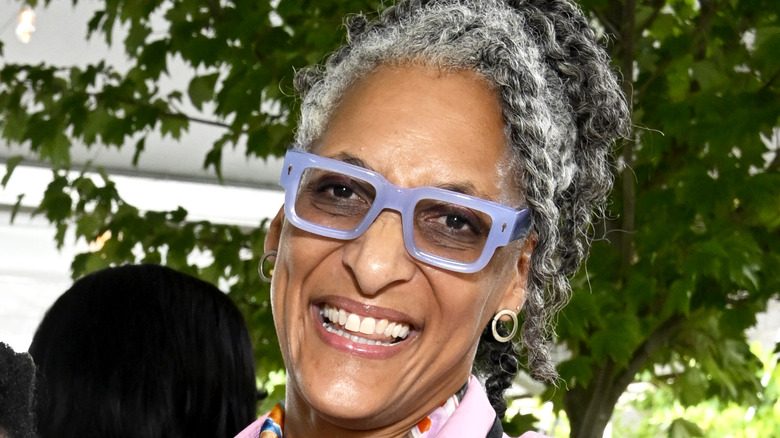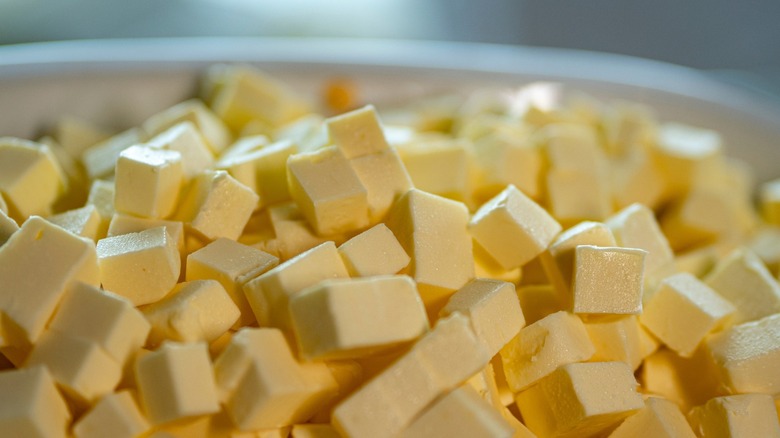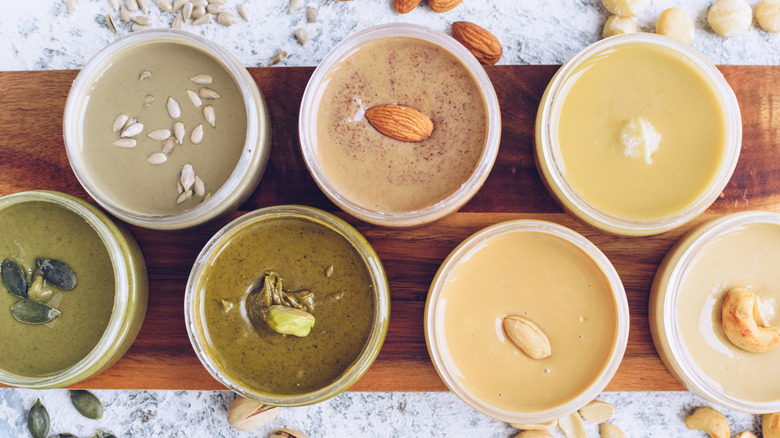Carla Hall's Simple Dairy-Free Butter Tip For Better Bakes
Since first appearing on "Top Chef," television personality Carla Hall has made a space for herself in the annals of Food Network history. With a plethora of helpful cooking videos and hosting duties on "Worst Cooks In America," Hall's expertise is not to be scoffed at. In addition to tips for making flakier biscuits, Hall knows a thing or two about baking with non-dairy. Grabbing such vegan products may not be your first instinct, but Hall wants you to know that it may be easier than you think.
"I want to teach people that [cooking without dairy] is accessible and not hard. It teaches you how to flavor foods and get depth of flavor," she told marthastewart.com. However, there are some things to look out for if you decide to forgo dairy for a recipe or two. Hall reminds us that butter derived from plants melts faster than the traditional sort. To counteract any negative effects, try freezing your non-dairy butter right before cooking. The Food Network star recommends doing so 30 minutes before baking; not long enough to make an unyielding block of butter, but enough to firm it up so it won't melt in your hands. An expert when it comes to baking, Hall has many informative tips on the subject.
Frozen butter is good for baking
Be it vegan or dairy butter, freezing the ingredient is a recipe for success. Dairy may not melt as fast as plant-based butter, but Carla Hall still incorporates this step in her baking rituals. It helps keep vegan butter intact and the pieces uniform in her recipes. The famous chef suggests grating your butter for crusts or biscuits with a box grater when combining ingredients to achieve equal shards of butter.
In recipes such as biscuits, incorporating the ingredients this way is especially helpful for vegan butter. Typical plant-based variations of dairy have more water, which can cause stains during baking. Baking with cold butter reduces this risk, especially when divided in such small pieces. This process also allows the butter to be mixed in evenly. Coating it in flour makes the butter less sticky and easier to work with. The most substantial danger with this method is accidentally cutting yourself on the grater. Hall recommends being careful with your fingers when grating the butter, especially when the stick of butter is down to its nub.
Best vegan butter to use
It's not just non-dairy milk that's great for baking; many brands of vegan butter are up to the job, too. But unlike buying the dairy variety, bakers can't be as cavalier with their choices. Pick up any stick of dairy butter, and it's a safe bet it will merge well with whatever you are doing in the kitchen. Vegan butter, on the other hand, may take some trial and error. There is a large variety of vegan butter simply because different brands are better at doing different things. Some types of vegan butter will fare better than others when it comes to baking.
The vegan product from Fora is not only totally dairy-free but also approved by several Michelin-starred chefs. It is one of the most comparable vegan butter types to dairy because of what it brings to the table. Fora can brown baked goods like dairy butter and even produce croissants that are just as flaky as the real thing. Some runners-up to Fora are Miyoko Creamery Organic Vegan Butter, Earth Balance Vegan Buttery Stick, and Om Sweet Home Non-Dairy Butter Alternative. Earth Balance is another accepted alternative to dairy because of how much it resembles the real thing. It spreads like dairy butter and contributes a nice color to baked goods. Om Sweet Home boasts of how well it whips, so it's great for making buttercream. While taste is subjective, these vegan options are favorites in the baking community.


